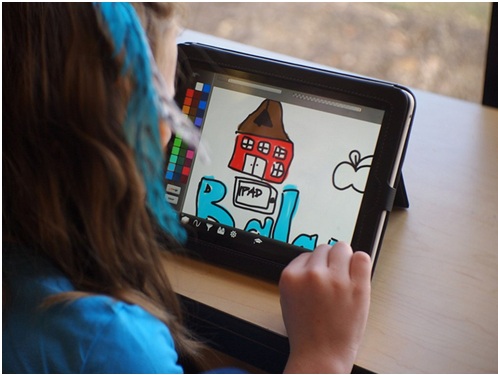The use of technology in the classroom has been growing slowly but surely in recent years, but some teachers and schools still avoid it and stick to the traditional white board, pens and paper method. But are they depriving their pupils of the benefits of technology focused learning? Let’s have a look at some of the benefits and drawbacks of technology use in the classroom.
Modern children need more stimulation
Some people would say that just because children these days are so over-stimulated is a problem, but, whatever your opinion, the fact is that children are now exposed to screens, games and television more than ever before and from a much younger age. This means that by the time they reach school, it might be difficult to grab their attention if the technology they are so familiar with isn’t used in teaching. Using technology in attention-grabbing and innovative ways is guaranteed to get children to engage with subject matter.
Children can lead their own learning
In recent years, some interactive displays for schools have started letting children take the reins of their own education, with the help of the internet. In order to prepare children for university and the world of work, where they won’t be spoon fed information, teachers can give groups of pupils a topic and let them research it with the help of technology and then teach the information they find to their peers. This helps students to start to understand that not all information on the web is trustworthy and how to identify credible sources, as they will need to do in later life. In this way, technology can give children more independence and engage them far more than the traditional method of a teacher standing at the front of a classroom and delivering information to a classfull of pupils.
Paper-free learning
Even now, plenty of teachers hand out dozens of photocopies to students on a daily basis. If learning is technology-based, hand-outs and worksheets can be downloaded to student’s devices, meaning a huge amount of paper can be saved, as well as the hours spent cutting and sticking, which could be put to much better use. This also means that pupils aren’t laden down with huge numbers of books and folders.
On the other hand, some are worried that the transition to screens means that children don’t develop adequate writing skills or learn how to manage a pair of scissors. There is definitely an argument for the use of pens, coloured pencils and paper to encourage creativity amongst young children, but once they have developed these skills the amount of photocopying involved in lessons can definitely be reduced to a minimum through the sensible and appropriate use of technology.
Technology breaks down borders
Rather than only being able to work with their classmates, technology lets schools link with other schools in different countries or even on different continents, meaning pupils could realistically put a project together with a contemporary on the other side of the world.
This is great in any subject, from Religious Education to Biology, but is especially relevant to language learning. What better way of getting students to really engage with their French, Spanish or Mandarin lessons that setting up a link with a school in France, Argentina or China? There are loads of platforms which will allow students to log on at a set time and video chat with their partner. This is normally done as a language exchange, with half the session conducted in English and half in the target language, so it’s mutually beneficial. This lets pupils start to understand the culture behind the language and develop their interest in learning about the world we live in.
Bottom line is new generations are born into a world of exponentially more advanced technology and we need to adapt teaching methods to it. Gadgets should be used as tools and bring these great advantages in the children’s process of learning: interaction, easy access to information, creativity and efficiency. By combining these methods with the traditional play and socializing, our children will be more adapted to the world around them. Rather than keep them away from smart devices, parents must learn to use them to instil a sense of education in their kids outside the classroom.


